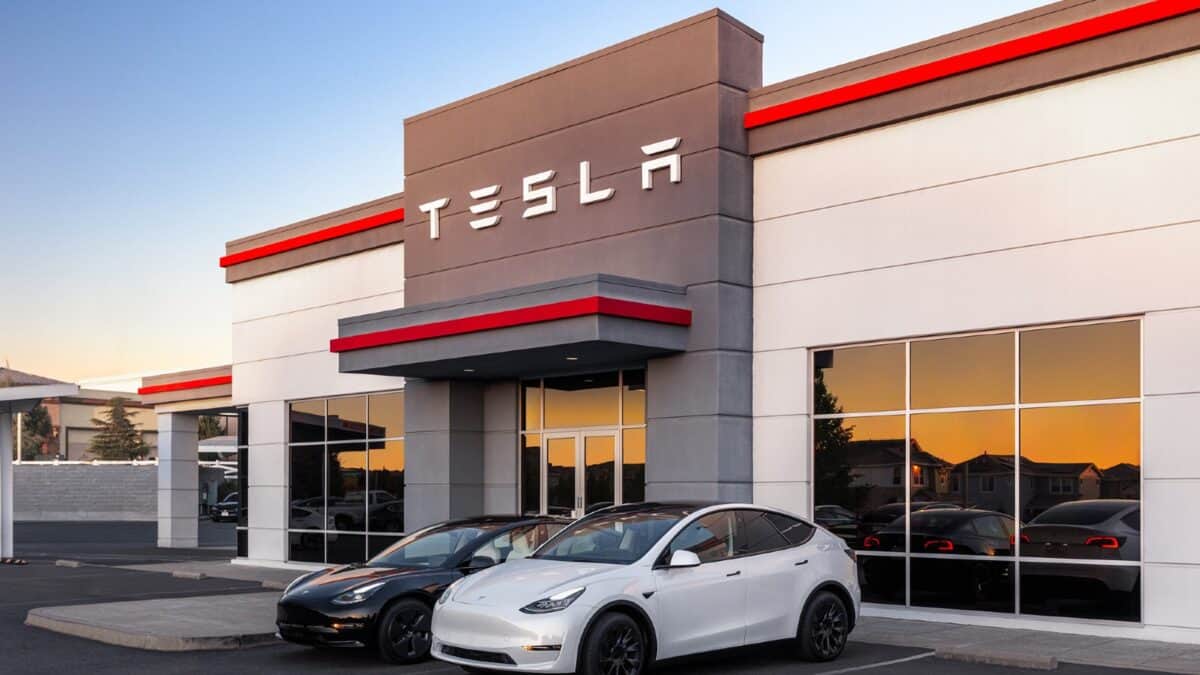Tesla (NASDAQ:TSLA) stock fell sharply at the beginning of the month. Investors who thought they were picking up a bargain then were engaging in a challenging investment activity: trying to catch a falling knife.
Note: return data correct as of time of recording.
Transcript:
CHRIS: Hi Fools, Chris Nials here and I’m joined by Motley Fool analyst Zaven Boyrazian. Morning Zaven!
ZAVEN: Morning Chris, I’m very well thank you.
CHRIS: We’re going to be talking about Tesla today, and how some retail investors have been trying to catch the proverbial ‘falling knife’ with its stock, but many have had their fingers nicked… Zaven, what’s been happening?
ZAVEN: Well Chris, the headline figure is that Tesla stock is down 17% over a fortnight. As such, a £10,000 investment then would be worth just £8,300 today.
Investors who thought they were picking up a bargain then were actually engaging in that incredibly challenging investment activity that you mentioned: trying to catch a falling knife.
We believe Tesla’s decline is attributed to a combination of weak global sales, leadership concerns, and analyst downgrades. Additionally, broader market volatility and Tesla’s fundamental challenges, such as declining deliveries and increased competition, have further eroded investor confidence.
While some remain optimistic about the company’s long-term potential, as reflected by brief rallies, the current trend suggests caution is warranted.
CHRIS: Now, I don’t think we can really talk about Tesla without mentioning its founder Elon Musk, who, and I don’t think this is unfair to say, cuts something of a divisive figure now, due to his involvement in US politics. Is this also having a bearing on Tesla’s downturn?
ZAVEN: Yes so Tesla’s stock has faced a steep selloff since Elon Musk’s move to Washington, D.C., to assume a key role in the Trump administration.
But it’s important to remember that this decline is attributed to several factors beyond Musk’s political involvement. Weak global sales, particularly in key markets like Germany and China, have raised concerns about Tesla’s growth trajectory. This has led to analysts downgrading delivery forecasts, further unsettling investors.
Additionally, market volatility driven by President Trump’s tariff policies and broader economic uncertainty has weighed heavily on Tesla and other tech stocks.
But Musk’s leadership distractions, including his role in the Department of Government Efficiency, have also fuelled doubts about his focus on Tesla. And despite his optimistic reassurances, the selloff reflects a combination of operational challenges, market dynamics, and investor skepticism.
CHRIS: Now, when we see a significant dip in a company’s share price, particularly one that has performed so admirably over a multi-year period, it can sometimes present investors with a more attractive buy-in price. So how’s the valuation now looking?
ZAVEN: Well, in my opinion, Tesla’s valuation metrics reveal a significant disconnection with reality.
The forward price-to-earnings (P/E) ratio of 82.9 times represents a staggering 450% premium to the consumer discretionary sector average. What’s more, the company doesn’t appear to have the growth to back this valuation up, with the price-to-earnings-to-growth (PEG) ratio sitting at 4.8 — a 235% premium to the sector average.
This overvaluation persists largely because some analysts and investors continue to tout Tesla’s long-term prospects in autonomous driving and robotics. However, in autonomous driving, competitors like Waymo appear to already have a substantial headstart.
Waymo, a subsidiary of Alphabet, has already launched commercial robotaxi services in multiple cities. This is leveraging years of testing and regulatory approvals, while Tesla’s Full Self-Driving (FSD) technology remains in beta and faces scrutiny over safety and reliability. You can also, as of just a few weeks ago, now hail a Waymo in Austin on Uber. That’s a big step.
In robotics, Tesla’s Optimus project aims to revolutionise automation with humanoid robots, targeting deployment in factories and eventually consumer markets. However, Optimus is still in its infancy, with plans to scale production to 10,000 units by 2025. This is a far cry from the ambitious 100m units Musk envisions long term.
So while I think Tesla’s AI and robotics initiatives are promising, there are significant execution risks. This makes the company’s current valuations, in my opinion at least, appear disconnected from its near-term realities.
And given the current volatility, I’m keeping my powder dry. And I say this as someone that actually wants Tesla to succeed, because its long-term focus is really exciting. However, I simply can’t put my money behind it at these valuations.
CHRIS: Ok great – thanks so much for the insight Zaven. Any final thoughts before we sign off?
ZAVEN: Underestimating Tesla’s ability to innovate has historically resulted in a lot of investors missing out on growth. And long-term I actually think there’s a lot of potential value this business can deliver for investors and the world in general.
But as previously mentioned, the current valuation, even after all the recent volatility, is still pretty demanding. As such, all it likely takes is one small stumble for the shares to correct sharply. So, for investors considering this business today, I think taking a cautious approach with dollar cost averaging is likely a sensible idea.
CHRIS: Thanks so much again Zaven, and thanks so much to everyone watching. Fool on!
Credit: Source link

![“£10,000 invested in Tesla stock a fortnight ago is now worth…” [VIDEO]](https://www.fool.co.uk/wp-content/uploads/2025/03/Tesla-Super-Charger-Station-1200x675.jpg)












